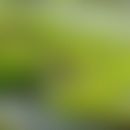Synonym(s)
DefinitionThis section has been translated automatically.
Diarrhoea, also known as diarrhea, is a disease caused by excessive bowel movements. It is accompanied by reduced or fluid stool consistency and increased stool quantity.
ClassificationThis section has been translated automatically.
According to etiology
- Infectious diarrhea (see below)
- Antibiotic-induced di arrhoea (see below)
- Food poisoning due to bacterial toxins such as S. aureus, B. cereus, Cl. perfringens
- drugs such as laxatives, quinidine, cytostatics, colchicine or chenodesoxylcholic acid
- intoxications by arsenic, copper, mercury or poisonous mushrooms
- Food allergies
- Diseases leading to malabsorption such as lactase deficiency and fructose intolerance, Whipple's disease, radiation enteritis, disorders of blood circulation or lymphatic drainage or sprue
- Diseases leading to maldigestion such as exocrine pancreatic insufficiency, chologenic diarrhoea or postgastrectomy
- Chronic inflammatory bowel diseases such as Crohn's disease and ulcerative colitis
- Adenomas and carcinomas of the colon
- Acute graft versus host disease
- Homononal causes such as hyperthyroidism, medullary thyroid carcinoma, or Addisonian crisis
- Autonomic diabetic neuropathy
Further classification into acute and chronic (over two weeks) diarrhea and small and large bowel diarrhea is useful.
You might also be interested in
Occurrence/EpidemiologyThis section has been translated automatically.
About 30% of the German population has one diarrhoea episode per year.
DiagnosisThis section has been translated automatically.
As part of the diagnostic procedure, an anamnesis with a description of the diarrhoea, the stool volume and an inspection of the bowel movement is carried out. In addition, the relationship to medication and/or food intake or a fasting cure is clarified.
In a further step, a stool inspection is carried out by the clinic and the temperature, hydration status, abdominal findings and extraintestinal symptoms are examined.
An examination of the stool is carried out with a detection of blood, fat, leucocytes, bacteria or parasites. In addition, the defecation is examined for elastase in order to rule out an exocrine pancreas. If there is any suspicion, the pathogens are diagnosed. Further examinations include colonoscopy and a colonic contrast enema.
TherapyThis section has been translated automatically.
Causal therapy is carried out with antibiotics in the case of mild infectious traveler's diarrhea. In case of a post-antibiotic therapy, a therapy by means of yoghurt and/or the active agent Saccharomyces boulardii is carried out; triggering antibiotics should be discontinued if still taken. In addition, a specific treatment of the non-infectious intestinal diseases is recommended.
Symptomatic therapy involves rehydration through the administration of fluids and electrolytes. In addition, secretion inhibitors, motility inhibitors and spasmolytics can be administered.
NaturopathyThis section has been translated automatically.
Order therapy, omitting known intolerances, allergies, therapeutic fasting.
Application: Phytopharmaceuticals for the treatment of diarrhea are available in the form of powders, tinctures, tea preparations, yeast in capsules and as dry extracts. For the therapy of diarrhea are suitable tannic drugs, swelling agents, adsorbents, anti-inflammatory drugs, peristaltic inhibiting drugs and substances that have microbiological, antisecretory, antisecretory, antibacterial, enzymatic and immunostimulant activity.
Acute nonspecific diarrhea:
Tannin drugs such as:
- Tormentillae rhizoma (Tormentil root).
- Rubi fruticosi fol ium (blackberry leaves)
- Myrtilli fructus (blueberry fruit)
- Cortex quercus(oak bark)
- Theae nigrae folium(black tea)
- Theae viridis folium(green tea)
Mucilage drugs (swelling drugs) such as:
- Cyamopsis tetragoanloba (guar)
- Lini Semen (flaxseed)
- Lichen islandicus (Icelandic moss)
- Verbasci flos (Verbasci species) etc.
Adsorbents like
- Aluminum compounds,
- Talc
- Silica gel
- Diatomaceous earth
- Activated carbon
gastroenteritis: uzarae radix (uzara root), tormentillae rhizoma (tormentil root)
intestinal mucositis: tannin drugs
Chronic recurrent diarrhea: Psyllii semen (psyllium), Plantago ovata semen (Indian psyllium), Tormentillae rhizoma (tormentil root), Saccharomyces boulardii (dry yeast)
Short bowel syndrome, anus praeter: Psyllii semen (psyllium), Plantago ovata sem en (Indian psyllium)
intestinal spasm with spastic pain: Uzarae radix (Uzara root), Tormentillae rhizoma (Tormentilla root)
Diarrhea in infants and children: Myrtilli fructus (blueberry fruit), apple or carrot pectin (see pectin below)
Phytotherapy internalThis section has been translated automatically.
Rubi fruticosi folium (blackberry leaves)
Daily dose: 4.5 g of the drug
As a tea infusion, boil a heaped teaspoon with a cup of water, leave to infuse for 10 to 15 minutes and strain. Consume several times a day between meals.
No combination preparations are available. However, combinations with agrimony or lady's mantle herb are useful.
Quercus cortex (oak bark)
Daily dose: 3 g of the drug
Prepare a cold water extract with half a teaspoon of chopped or powdered drug in a cup of cold water, bring to the boil briefly and then leave to infuse for 5 minutes. Drink warm several times a day before meals.
For a tea decoction, add 2 to 4 heaped teaspoons of the cut drug to ¼ liter of cold water, bring to the boil briefly and then strain. Drink warm several times a day before meals.
Preparations: Bombastus® oak bark tea
Combination preparations are only available as free formulations with other tannin drugs such as tormentil rootstock.
Alchemillae herba (lady's mantle herb)
The average daily dose is 3 g of the drug.
Prepare a cold water extract with 3 teaspoons of the crushed drug and 1 cup of cold water, leave to infuse for about 5 hours and then strain. Between one and three cups should be consumed per day.
Combination preparations are only available as free formulations with other tannin drugs such as goose cinquefoil.
Potentillae anserinae herba (goose cinquefoil)
As a tea infusion, boil a heaped teaspoon with a cup of water, leave to infuse for 10 minutes and strain. Consume several times a day between meals.
Preparations:
Schoeneberger Naturreiner Heilpflanzensaft Gänsefingerkraut
Combination preparations are only available as free formulations with other tannin drugs such as blackberry leaves.
Myrtilli fructus (blueberry fruit) Vaccinium myrtillus, fructus siccus
Dried fruits: Chew 5 to 10 g of the dried fruits several times a day.
For a tea decoction, prepare 5 to 10 g of the crushed berries with ¼ liter of cold water, boil briefly and then strain. Drink warm several times a day before meals.
No combination preparations are available.
Coffea carbo (coffee charcoal)
Mix a level teaspoon in water several times a day and drink.
Preparations: Carbo Königsfeld® powder: Children over 12 years and adults should take one level measuring spoon 4 times a day.
Kohle-Hevert® tablets (250 mg): Dissolve 2 to 4 tablets 3 to 4 times daily in liquid. Children 1 to 2 tablets at a time.
Combination preparations: MYRRHINIL-INTEST® Dragees: 4 dragees 3 x daily
Agrimoniae herba (agrimony)
For a tea decoction, brew a handful of the herb in 1 liter of cold water several times a day, bring to the boil briefly and then strain.
If using a powder, stir a level teaspoon into water several times a day.
As a tea infusion, boil a teaspoon with a cup of water, leave to infuse for 5 to 10 minutes and strain; consume 3 times a day before meals.
No combination preparations are available.
Syzygii cumini cortex (Syzygium bark)
For a tea decoction, prepare approx. 6 g of the drug with 200 ml of cold water, bring to the boil briefly and then strain.
No combination preparations are available.
Theae nigrae folium(black tea) and Theae viridis folium(green tea)
For a tea decoction, add approx. 1 teaspoon of the crushed drug to 150 ml of water, bring to the boil briefly, leave to infuse for 10 minutes and then strain.
No mono- or combination preparations are available.
Tormentillae rhizoma (tormentil rhizome)
For a tea decoction, mix about 1 teaspoon of the drug with 200 ml of cold water, bring to the boil briefly and then strain; consume one cup 3 to 4 times a day before meals.
Take a tincture several times a day, or 10 to 30 drops every hour in acute conditions.
Preparations: Bloodroot tea® Aurica
No combination preparations are available. However, combinations with drugs such as cinquefoil and chamomile flowers are useful.
Saccharomyces boulardii (dried yeast)
Preparations: Perenterol® forte 250 mg capsules, Perocur® forte 250 mg hard capsules
No combination preparations are available.
Uzarae radix (Uzara root)
Preparations: Uzara® 40 mg coated tablets, Uzara® solution. Combination preparations are not recommended.
Turmeric: Curcumae longae rhizoma and turmeric: Curcumae xanthorrhizae rhizoma
Wild strawberry leaves: Fragariae folium
Vaccinium myrtillus, fructus siccus
s.a. Callunae herba, Camelliae sinensis non fermentata folia
s.a. Ylang-ylang
Extended naturopathyThis section has been translated automatically.
Phytopharmaceuticals for internal use
Rubi fruticosi folium(blackberry leaves)
Daily dose: 4.5 g of the drugAs a
tea infusion, boil a heaped teaspoon with a cup of water, leave to infuse for 10 to 15 minutes and strain. Consume several times a day between meals.
There are no combination preparations available. However, combinations with agrimony or lady's mantle herb are recommended.
Quercus cortex (oak bark)
Daily dose: 3 g of the drug
Cold water extract with half a teaspoon of sliced or powdered drug with a cup of cold water, bring to the boil briefly and then allow to steep for 5 minutes. Drink warm several times a day before meals.
For a tea decoction, add 2 to 4 heaped teaspoons of the cut drug with a ¼ litre of cold water, bring to the boil briefly and then strain. Drink warm several times a day before meals.
Preparations: Bombastus® oak bark tea combination preparations
are only available as free formulations with other tanning drugs like tormentil rootstock.
Alchemillae herba(lady's mantle herb)
The average daily dose is 3 g of the drug.
Prepare cold water extract with 3 teaspoons of the crushed drug and 1 cup of cold water, leave to stand for about 5 hours and then strain. Between one and three cups per day should be consumed.
Combination preparations are only available as free formulations with other tanning drugs such as goosefoot.
Potentillae anserinae herba (silverweed)
As a tea infusion, boil a heaped teaspoon with a cup of water, leave to stand for 10 minutes and strain. Consume several times a day between meals.
Preparations
:Schoeneberger naturally pure medicinal plant juice goosefinger
Combination preparations are only available as free formulations with other tanning drugs such as blackberry leaves.
Myrtilli fructus (blueberry fruit)
Dried fruit: Chew 5 to 10 g of the dried fruit several times a day.
For a tea decoction, boil 5 to 10 g of the crushed berries with a ¼ litre of cold water, bring briefly to the boil and then strain. Drink warm several times a day before meals.
There are no combination preparations available.
Coffea carbo(coffee charcoal)
Several times a day, stir a level teaspoon into water and drink.
Preparations: Carbo Königsfeld® powder: Children over 12 years and adults should take one level measuring spoonful 4 times daily.
Kohle-Hevert® tablets (250 mg): 2 to 4 tablets should be dissolved in liquid 3 to 4 times a day. Children 1 to 2 tablets each.
Combined preparations: MYRRHINIL-INTEST® tablets: 4 tablets 3 x daily
Agrimoniae herba (agrimony herb)
When boiling tea several times a day, place a handful of the herb in 1 litre of cold water, bring briefly to the boil and then strain.
If using a powder, stir a level teaspoon into water several times a day.
As a tea infusion, boil a teaspoon with a cup of water, leave to stand for 5 to 10 minutes and strain; consume 3 times daily before meals.
There are no combination preparations available.
Syzygii cumini cortex(Syzygium bark)
For a tea decoction, prepare about 6 g of the drug with 200 ml of cold water, bring to the boil briefly and then strain.
There are no combination preparations available.
Theae nigrae folium (black tea) and Theae viridis folium (green tea)
For a tea decoction, prepare about 1 teaspoon of the crushed drug with 150 ml litres of water, bring to the boil briefly, leave to infuse for 10 minutes and then strain.
There are no mono or combination preparations available.
Tormentillae rhizoma (tormentil rootstock)
For a tea decoction, prepare about 1 teaspoon of the drug with 200 ml of cold water, boil briefly and then strain; consume one cup 3 to 4 times a day before meals.
Take one tincture several times a day, in acute conditions 10 to 30 drops per hour if necessary.
Preparations: Bloodroot Tea® Aurica
There are no combination preparations available. However, combinations with drugs such as goosefoil and camomile flowers are useful.
Saccharomyces boulardii (dry yeast)
Preparations: Perenterol® forte 250 mg capsules, Perocur® forte 250 mg hard capsulesThere
are no combination preparations available.
Uzarae radix (Uzara root)
Preparations: Uzara® 40 mg coated tablets, Uzara® solution. Combination preparations are not recommended.
Note(s)This section has been translated automatically.
Special forms of diarrhoea are paradox diarrhoea, nosocomial diarrhoea and irritable bowel syndrome.
Incoming links (28)
Agrimoniae herba; Alchemillae herba; Althaeae radix; bittersweet nightshade; Camelliae sinensis non fermentata folia; Coffea carbo; Coriander; Curcumae longae rhizoma; Faex medicinalis; Fragariae folium; ... Show allOutgoing links (37)
Adsorbent; Agrimoniae herba; Alchemillae herba; Aluminium; Callunae herba; Camelliae sinensis non fermentata folia; Coffea carbo; Curcumae longae rhizoma; Curcuma xanthorrhizae rhizoma; Diarrhoea, antibiotic-induced; ... Show allDisclaimer
Please ask your physician for a reliable diagnosis. This website is only meant as a reference.




